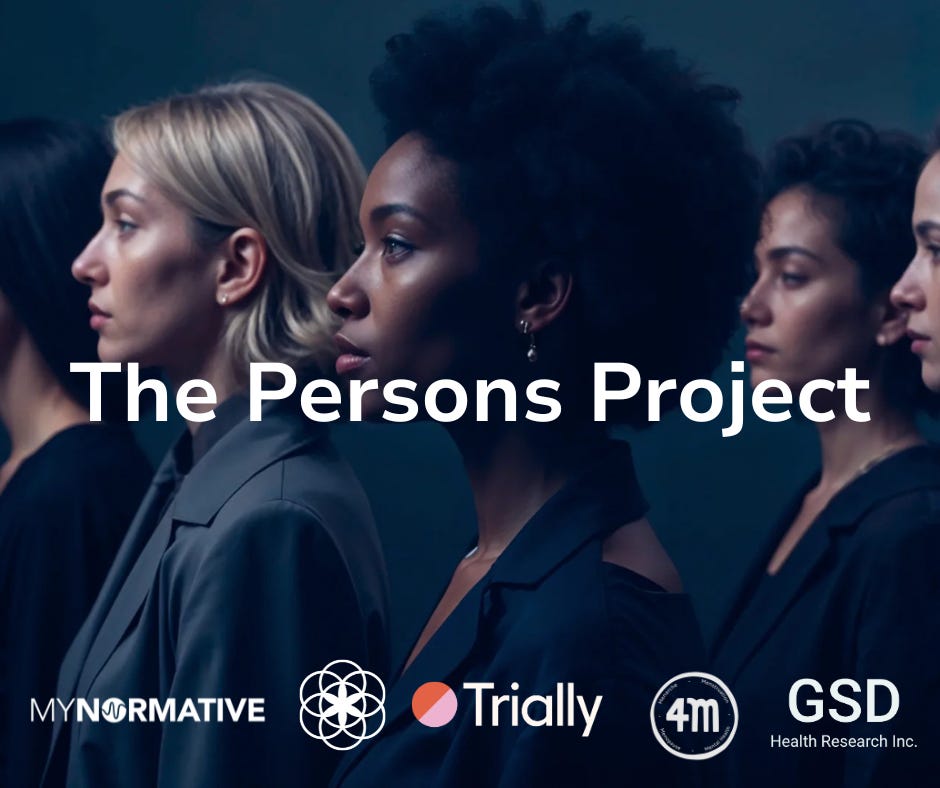My Normative launches cross-sector push to fix women’s health data bias
Tackling the 95-year lag as healthcare still treats women as small men
Nearly a century after women were first recognized as “persons” in Canada, and five years after renewed global attention to that milestone, the health research industry still largely treats women as a biomedical afterthought.
Now, Calgary-based My Normative announced a multi-sector collaboration designed to change that.
Called ‘The Persons Project’, the initiative brings together nine pioneering research and industry partners — including 4M, Clue, GSD Health Research, Trially AI, and leading researchers Dr. Stacy Sims and Dr. Claire Badenhorst — to tackle the persistent lack of sex- and gender-specific data in health research.
The project takes its name from the landmark October 18, 1929 “Persons Case”, when Canada’s highest court declared that women were indeed legal “persons.” A century later, My Normative and its collaborators say a similar shift is overdue in medicine — one that fully recognizes women as distinct physiological, social, and cultural beings rather than “small men.”
The enduring data gap
The statistics remain stark. Women are 50% more likely to be misdiagnosed during a heart attack and twice as likely to experience adverse drug reactions. They represent 80% of autoimmune disorder cases, are twice as likely to develop Alzheimer’s disease, and yet continue to be routinely excluded from clinical trials — dismissed as “too complicated” due to hormonal variability.
As My Normative’s CEO Danika Kelly puts it,
“We’re thrilled to partner with these research and industry leaders who share our commitment to equitable health research. By working together, we can accelerate closing the sex and gender data gap to ensure that health systems reflect the needs of all people.”
A united effort for change
Over the next six months, The Persons Project aims to demonstrate how coordinated, cross-sector collaboration can establish a new gold standard for inclusive, sex- and gender-aware health research.
Participants will contribute in four key areas:
Domain expertise and data resources to fill existing gaps
Feedback loops to guide cross-industry collaboration and shared roadmaps
Collaborative design to reduce barriers to innovation
Public education and communication to address systemic knowledge deficits
By breaking down the silos between health tech, academia, and clinical research, the project seeks not only to generate better data but also to influence how health research is conducted — and funded — in the future.
Voices from the collaboration
“For more than a decade, millions have trusted Clue to track their cycles and make informed health decisions,” said Amanda Shea, Fractional Chief Science Officer at Clue.
“But the biggest barrier to better outcomes is that women’s health is still not fully understood or prioritized. Through The Persons Project, we can join forces with partners to transform the lived experiences of our community into collective power that accelerates systemic progress.”
At GSD Health Research, co-founder and CEO Katie Baca-Motes highlights how data innovation can finally move the field forward:
“For decades, women’s health has lacked the depth and completeness of data we take for granted in other areas of medicine. At GSD, we’re adding female-specific data layers — menstrual and hormonal status, cycle-linked symptoms, and sensor-based physiology — to build the evidence base needed to study sex differences rigorously.”
And from the research network 4M, co-directors Professor Gemma Sharp and Luana De Giorgio explais the collaborative ethos driving the project:
“Progress in women’s health depends on connection — between people, disciplines, and data. The Persons Project embodies that principle, helping make sex- and gender-aware research the norm rather than the exception.”
Looking ahead
The Persons Project is part of a growing wave of efforts to rebuild the evidence base of women’s health from the ground up — a recognition that innovation cannot advance without inclusive data. In this structure, it brings together commercial, academic, and digital health players who typically operate in parallel rather than partnership.
While the project’s initial phase runs just six months, its backers see this as a blueprint for a longer-term transformation — one that redefines how data, design, and diversity intersect in the future of health research.



